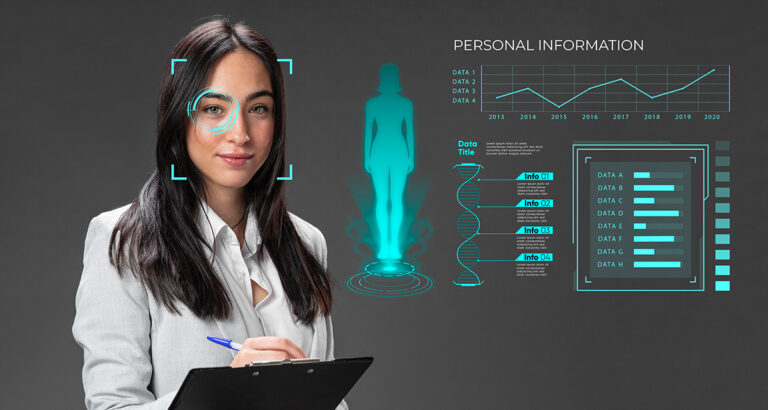The stethoscope around your neck carries weight beyond its physical presence. It represents years of training, countless patient encounters, and the profound responsibility of healing. Yet as we stand at the crossroads of modern medicine, a growing body of evidence suggests that our most powerful interventions may not always come from the pharmacy, but from the farm, the kitchen, and the daily choices our patients make outside our clinical walls.
The pharmaceutical revolution of the 20th century transformed medicine, turning previously fatal conditions into manageable diseases. Antibiotics conquered infections, antihypertensives tamed blood pressure, and statins became the guardians against cardiovascular disease. However, as we witness the rise of chronic diseases, antibiotic resistance, and healthcare costs that threaten to consume national budgets, the medical community is rediscovering an ancient truth: prevention and lifestyle medicine may be our most potent therapeutic tools.
The Metabolic Crisis Hidden in Plain Sight
Consider the patient sitting in your waiting room right now. Statistically, they have a 60% chance of having at least one chronic condition, with diabetes, hypertension, and cardiovascular disease leading the charge. The conventional approach involves reaching for our prescription pads, titrating medications, and scheduling follow-up appointments to monitor drug interactions and side effects. Yet beneath this familiar clinical dance lies a troubling reality: we are managing symptoms while the root causes continue to flourish.
The modern Western diet, characterized by ultra-processed foods, refined sugars, and industrial seed oils, has created a perfect storm of metabolic dysfunction. Our patients consume foods that their great-grandparents would not recognize, and their bodies are responding with predictable rebellion. Chronic inflammation, insulin resistance, and oxidative stress have become the background noise of contemporary physiology, requiring increasingly complex pharmaceutical interventions to maintain homeostasis.
This shift represents more than a clinical challenge; it represents a fundamental misalignment between human biology and modern living. Our genes, shaped over millennia of evolutionary pressure, remain largely unchanged from our hunter-gatherer ancestors. Yet our food environment has transformed dramatically within a single generation, creating what researchers term “evolutionary mismatch” – the discord between our biological design and our current lifestyle.
Food as Medicine: Rediscovering Hippocrates
The father of medicine understood something we have temporarily forgotten: “Let food be thy medicine and medicine be thy food.” This principle, while ancient, finds increasing validation in contemporary research. The emerging field of nutritional psychiatry demonstrates that dietary interventions can be as effective as antidepressants for certain populations. Studies show that the Mediterranean diet reduces cardiovascular events more effectively than many pharmaceutical interventions, while intermittent fasting protocols show promise in reversing type 2 diabetes.
The microbiome revolution has further illuminated food’s medicinal properties. The trillions of microorganisms residing in our patients’ digestive systems influence everything from mood and cognition to immune function and metabolism. These microscopic allies respond rapidly to dietary changes, often showing measurable shifts within days of nutritional interventions. When we prescribe probiotics, we acknowledge this principle, yet we often overlook the more powerful intervention of feeding beneficial bacteria through prebiotic-rich whole foods.
Phytonutrients, the bioactive compounds found in plants, represent nature’s pharmacy. Curcumin rivals NSAIDs in anti-inflammatory potency, while berberine matches metformin’s glucose-lowering effects. Sulforaphane from cruciferous vegetables activates cellular detoxification pathways, and polyphenols from colorful fruits and vegetables protect against oxidative damage. These compounds work synergistically, creating therapeutic effects that isolated pharmaceutical agents struggle to replicate.
The Sleep-Health Nexus
While nutrition captures much attention in lifestyle medicine discussions, sleep represents an equally critical therapeutic intervention. Our patients live in a world of artificial light, irregular schedules, and constant stimulation, creating what sleep researchers call “societal jet lag.” The consequences extend far beyond daytime fatigue.
Sleep deprivation triggers a cascade of metabolic dysfunction. Growth hormone secretion becomes impaired, affecting tissue repair and metabolism. Insulin sensitivity plummets, contributing to diabetes risk. The hormones governing appetite, leptin and ghrelin, become dysregulated, driving overeating and weight gain. Cortisol patterns shift, promoting abdominal fat storage and chronic inflammation.
The immune system, too, suffers under sleep debt. Natural killer cell activity decreases, wound healing slows, and vaccine responses diminish. Patients who chronically sleep fewer than seven hours per night face increased risks of cardiovascular disease, diabetes, obesity, and even certain cancers. Yet how often do we inquire about sleep quality with the same rigor we apply to blood pressure readings or laboratory values?
Movement as Medicine
The human body was designed for movement, yet modern life has engineered physical activity out of daily existence. Our patients spend their days in seated positions, commuting in cars, working at desks, and relaxing on couches. This sedentary lifestyle creates a cascade of physiological dysfunction that pharmaceuticals struggle to address comprehensively.
Regular physical activity provides benefits that span every organ system. It improves insulin sensitivity more effectively than most diabetes medications, reduces inflammation markers, strengthens bones, and enhances cardiovascular function. Exercise stimulates the production of brain-derived neurotrophic factor, promoting neuroplasticity and protecting against cognitive decline. It also triggers the release of endorphins and other mood-regulating neurotransmitters, often rivaling antidepressants in efficacy.
The prescription for movement need not be complex. Simple interventions like post-meal walks can significantly improve glucose tolerance. Resistance training twice weekly can reverse sarcopenia and improve metabolic health. Even brief interruptions to prolonged sitting can mitigate some of the cardiovascular risks associated with sedentary behavior.
Stress and the Modern Epidemic
Chronic stress represents perhaps the most underappreciated factor in contemporary disease patterns. Our patients navigate a world of constant connectivity, financial pressures, social media comparison, and uncertain futures. Their nervous systems, designed for acute threats followed by recovery periods, remain locked in perpetual activation.
This chronic stress response creates a perfect storm for disease development. Elevated cortisol levels promote abdominal obesity, insulin resistance, and hypertension. Chronic inflammation becomes the norm, contributing to everything from depression to cardiovascular disease. The gut-brain axis becomes disrupted, affecting digestion, mood, and cognitive function.
Stress management interventions, from meditation and yoga to nature exposure and social connection, offer therapeutic benefits that extend far beyond symptom relief. These practices literally rewire the nervous system, shifting patients from chronic sympathetic activation toward parasympathetic restoration. The health benefits include improved immune function, better sleep quality, enhanced emotional regulation, and reduced inflammation markers.
Social Connections and Community Health
Human beings evolved as social creatures, yet modern life increasingly isolates individuals from meaningful community connections. Loneliness has become so prevalent that some countries have appointed ministers of loneliness to address this public health crisis. The health consequences rival those of smoking or obesity.

Social isolation triggers inflammatory responses, impairs immune function, and increases risks of depression, anxiety, and cognitive decline. Conversely, strong social connections provide protective effects against numerous diseases and can even extend lifespan. The Blue Zones, regions where people regularly live to 100, share common characteristics that include strong social bonds and community engagement.
As healthcare providers, we rarely assess our patients’ social connections with the same systematic approach we apply to blood pressure or cholesterol levels. Yet social prescribing, the practice of connecting patients with community activities and support networks, shows remarkable therapeutic potential.
Environmental Medicine: The Invisible Factors
Our patients exist within environments that profoundly influence their health, yet these factors often remain invisible in clinical assessments. Air pollution contributes to cardiovascular disease, respiratory conditions, and even neurological disorders. Endocrine-disrupting chemicals in household products and personal care items interfere with hormonal balance. Heavy metals from various sources can affect cognitive function and metabolic health.
Light exposure patterns influence circadian rhythms, affecting everything from sleep quality to hormone production. Our patients often experience excessive artificial light in the evening while lacking adequate natural light exposure during the day. This disruption contributes to sleep disorders, mood problems, and metabolic dysfunction.
Creating healthy environments involves both reducing harmful exposures and optimizing beneficial ones. Simple interventions like improving indoor air quality, reducing chemical exposures, and optimizing light patterns can provide significant health benefits without requiring pharmaceutical interventions.
The Economic Imperative
The shift toward lifestyle medicine is not merely idealistic; it represents an economic necessity. Healthcare costs continue to escalate, with chronic diseases consuming the majority of healthcare resources. The current model of managing chronic conditions through pharmaceutical interventions, while valuable, is financially unsustainable.
Lifestyle interventions offer remarkable cost-effectiveness. Dietary changes that reverse type 2 diabetes eliminate the need for expensive medications and prevent costly complications. Exercise programs that prevent falls in elderly patients reduce emergency room visits and hospitalizations. Stress management techniques that improve mental health can reduce the need for psychiatric medications and decrease healthcare utilization.
Furthermore, lifestyle interventions often provide benefits across multiple conditions simultaneously. A patient who adopts a whole-food diet, regular exercise routine, and stress management practices may see improvements in diabetes, hypertension, depression, and arthritis concurrently. This systemic approach contrasts with the pharmaceutical model of one drug per condition, often leading to polypharmacy and drug interactions.
Integrating Lifestyle Medicine into Clinical Practice
The transition from conventional to lifestyle-informed medical practice requires both mindset shifts and practical tools. It begins with recognizing that lifestyle factors are not secondary considerations but primary determinants of health outcomes. This perspective elevates nutrition counseling, sleep hygiene education, and stress management techniques to the same level as medication prescribing.
Practical implementation involves developing skills in lifestyle assessment and intervention. This includes learning to take comprehensive lifestyle histories, understanding basic nutrition principles, and becoming familiar with evidence-based behavior change techniques. It also involves building referral networks with qualified nutritionists, fitness professionals, and mental health providers who share a lifestyle medicine approach.
The therapeutic relationship itself becomes enhanced through lifestyle medicine. Instead of simply prescribing treatments, physicians become partners in helping patients optimize their daily choices. This collaborative approach often improves patient satisfaction and engagement while addressing root causes rather than merely managing symptoms.

The Path Forward
The future of medicine lies not in choosing between pharmaceuticals and lifestyle interventions but in skillfully integrating both approaches. Medications remain essential for acute conditions, severe illnesses, and situations where lifestyle changes alone are insufficient. However, lifestyle medicine provides the foundation upon which pharmaceutical interventions can work most effectively.
This integration requires courage to challenge conventional approaches and wisdom to recognize when each tool is most appropriate. It demands that we expand our therapeutic toolkit beyond the prescription pad to include the full spectrum of healing modalities. Most importantly, it asks us to remember that our role extends beyond treating disease to promoting optimal human flourishing.
The patient in your waiting room deserves more than symptom management. They deserve a healthcare approach that honors the complexity of human biology and the power of daily choices. From farmer to pharma, the path to healing winds through kitchens and gardens, bedrooms and walking trails, social connections and quiet moments of reflection. Our stethoscopes will always remain important tools, but perhaps our most powerful interventions lie in helping patients rediscover the ancient art of living well.
The prescription for health cannot be filled at a pharmacy alone. It must be cultivated daily through conscious choices that align with our biological design and deepest human needs. In embracing this broader perspective, we do not diminish the value of modern medicine but rather fulfill its highest potential: the restoration and optimization of human health in all its magnificent complexity.





